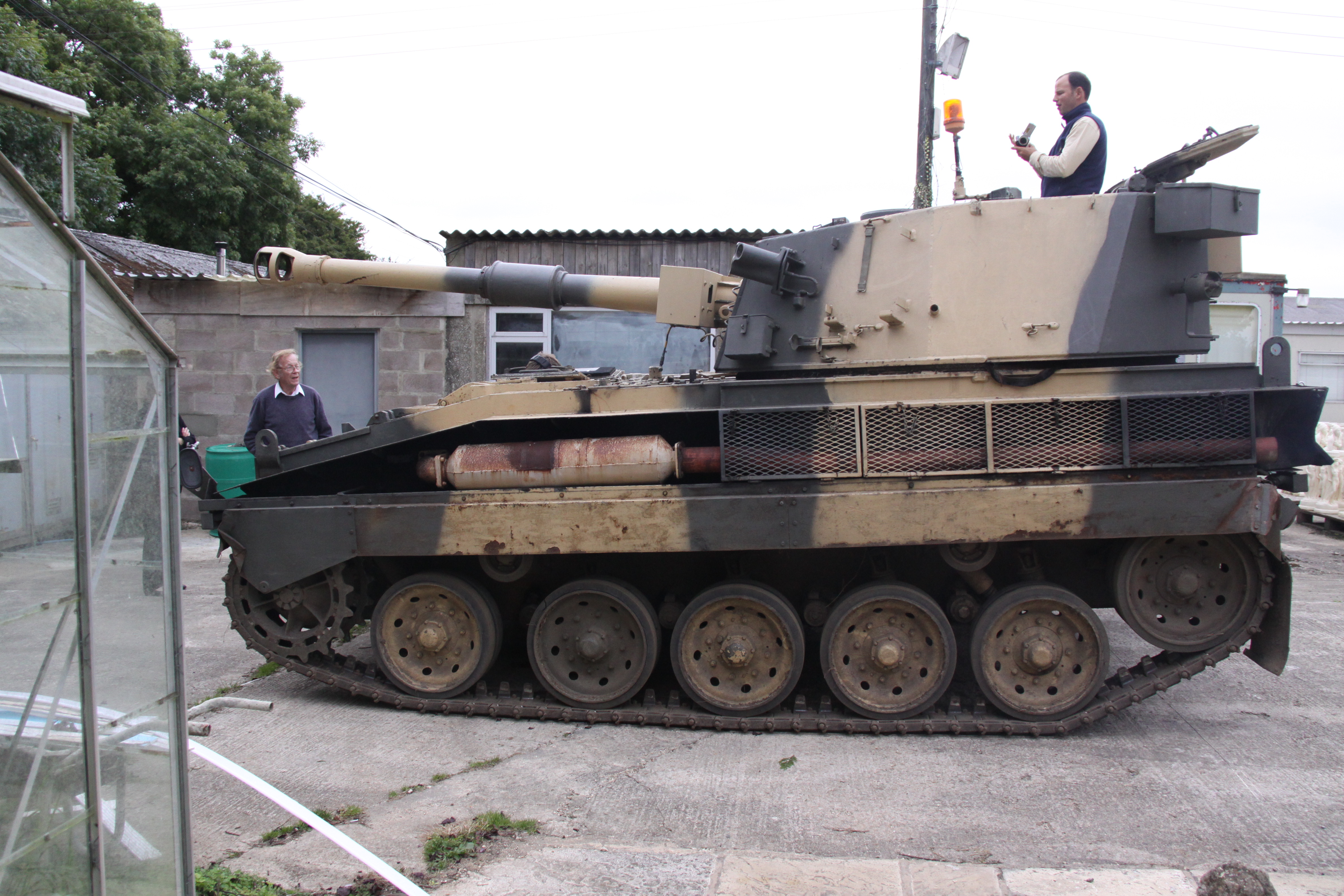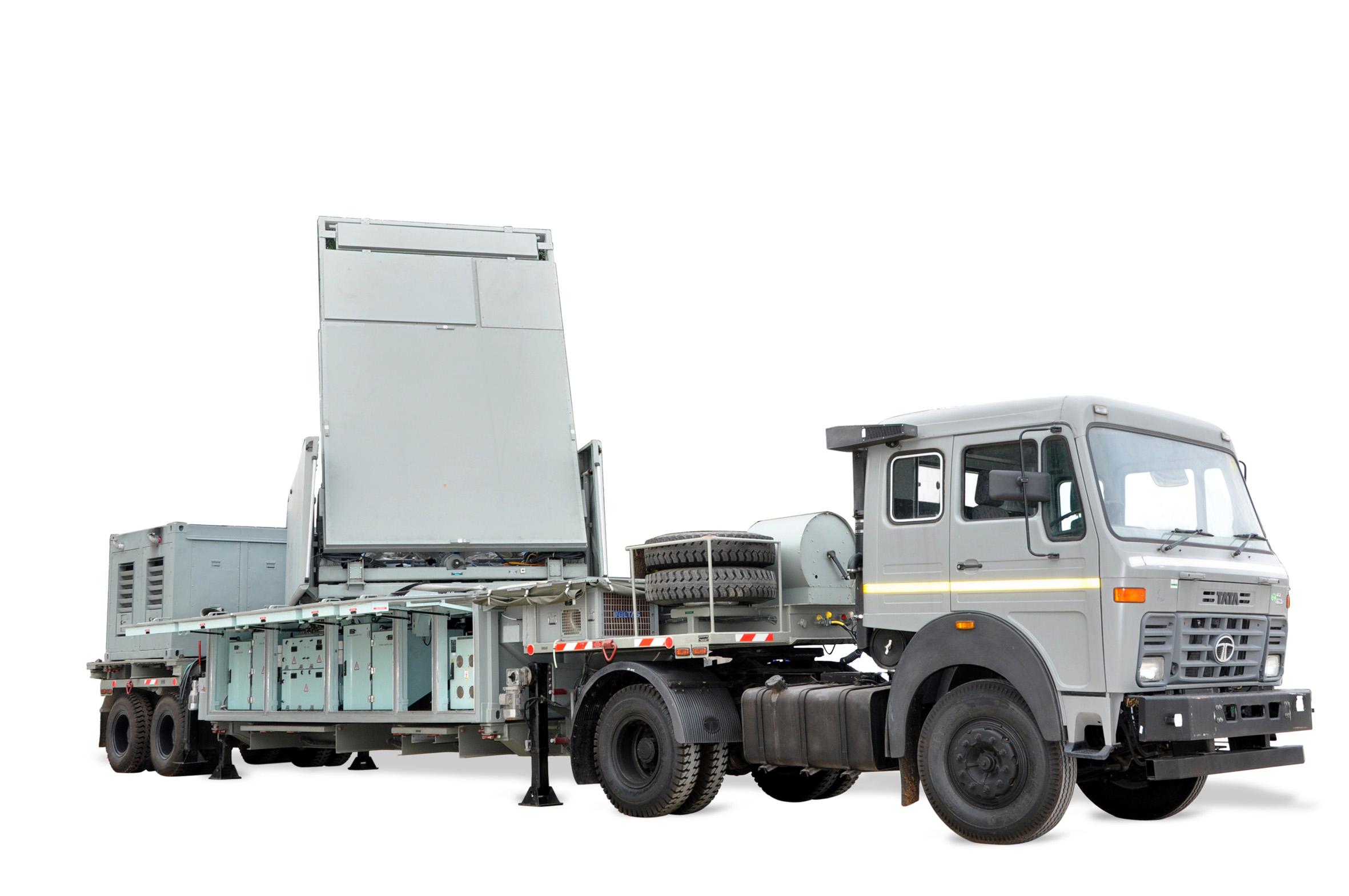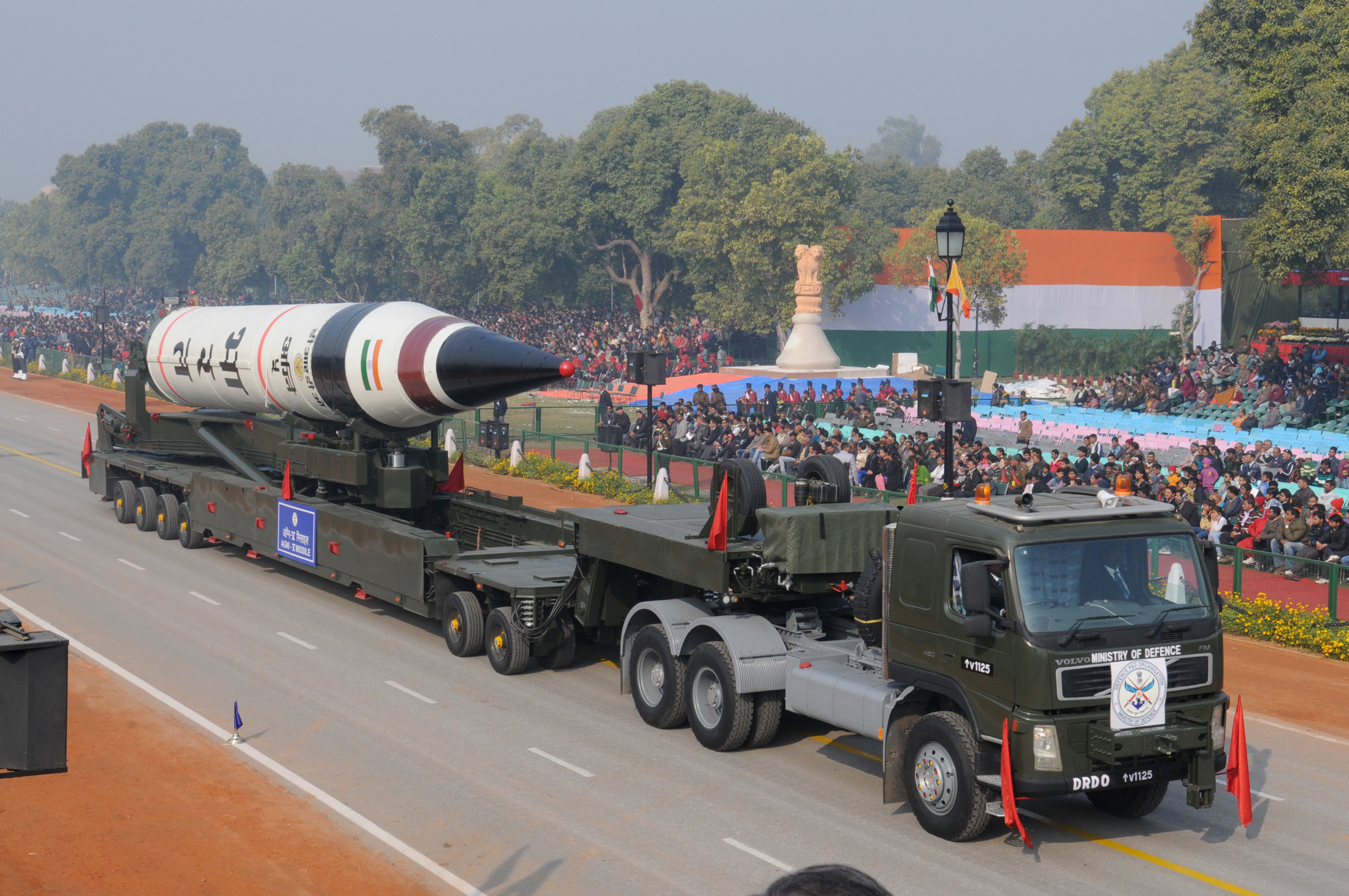|
Vehicle Research And Development Establishment
Vehicle Research and Development Establishment (VRDE) is a laboratory of the Defence Research & Development Organization (DRDO) located at Vahannagar near Ahmednagar. Its primary function is research and development of various light tracked, wheeled and specialised vehicles for defence applications. History The history of Vehicle Research & Development Establishment dates back to 1929, with the inception of Chief Inspectorate of Mechanical Transport (CIMT) at Chaklala now in Pakistan. In 1947, the Establishment was shifted to Ahmednagar and was renamed as Technical Development Establishment (Vehicles), popularly known as TDE (V). In 1962, the engineering wing was separated with the establishment of an independent establishment at Pune, named as Research & Development Establishment (R&DE). Further in 1965, the activities were bifurcated between ‘R&D’ and ‘Inspection’ and two separate establishments viz. Vehicle Research & Development Establishment (VRDE) and Controlle ... [...More Info...] [...Related Items...] OR: [Wikipedia] [Google] [Baidu] |
Ahmednagar
Ahmednagar (), is a city located in the Ahmednagar district in the state of Maharashtra, India, about 120 km northeast of Pune and 114 km from Aurangabad. Ahmednagar takes its name from Ahmad Nizam Shah I, who founded the town in 1494 on the site of a battlefield where he won a battle against superior Bahamani forces. It was close to the site of the village of Bhingar. With the breakup of the Bahmani Sultanate, Ahmad established a new sultanate in Ahmednagar, also known as Nizam Shahi dynasty. Ahmednagar has several dozen buildings and sites from the Nizam Shahi period. Ahmednagar Fort, once considered almost impregnable, was used by the British to house Jawaharlal Nehru (the first prime minister of India) and other Indian Nationalists before Indian independence. A few rooms there have been converted to a museum. During his confinement by the British at Ahmednagar Fort in 1944, Nehru wrote the famous book ''The Discovery of India''. Ahmednagar is home to the Indian A ... [...More Info...] [...Related Items...] OR: [Wikipedia] [Google] [Baidu] |
Vehicle Factory Jabalpur
Vehicle Factory Jabalpur (Hindi: वाहन निर्माणी जबलपुर), is a military motor vehicle factory, located in Jabalpur, Madhya Pradesh, India, part of Armoured Vehicles Nigam Limited which was previously a part of Ordnance Factory Board, controlled by the Ministry of Defence, Government of India. History The production of Shaktiman trucks (MAN 415 L1 AR), Jonga (Jabalpur Ordnance and Guncarriage Assembly) Light Utility Vehicles and the Vahan 1 ton (Nissan 4W73 Carrier), began at the Gun Carriage Factory Jabalpur, in 1959. Pandit Jawaharlal Nehru, the then Prime Minister of India, was present to witness rolling out of the first batch of vehicles at GCF. It was shifted to the present location in 1969. It started manufacturing Shaktiman trucks with license from MAN SE of Germany, along with Jonga and Vahan 1 ton under license from Nissan of Japan. All three of the above products have been retired and replaced by the new products. Products VFJ manufa ... [...More Info...] [...Related Items...] OR: [Wikipedia] [Google] [Baidu] |
FV433 Abbot SPG
FV433, 105mm, Field Artillery, Self-Propelled "Abbot" is the self-propelled artillery, or more specifically self-propelled gun Self-propelled artillery (also called locomotive artillery) is artillery equipped with its own propulsion system to move toward its firing position. Within the terminology are the self-propelled gun, self-propelled howitzer, self-propelled mo ... (SPG), variant of the British Army FV430 series of armoured fighting vehicles (AFVs), using much of the chassis of the FV430 but with a fully rotating gun turret, turret at the rear housing the 105 mm gun and given the vehicle designation of FV433. Designed as a Sexton (artillery), Sexton replacement, its correct designation was "Gun Equipment 105mm L109 (Abbot)"; L109 was little used, probably to avoid confusion with the 155 mm M109 howitzer that entered UK service at about the same time. The name "Abbot" continued the World War II, Second World War style of naming self-propelled artillery after e ... [...More Info...] [...Related Items...] OR: [Wikipedia] [Google] [Baidu] |
Ordnance Factories Board
Ordnance Factory Board (OFB), consisting of the Indian Ordnance Factories, now known as Directorate of Ordnance (Coordination & Services) was an organisation, under the Department of Defence Production (DDP) of Ministry of Defence (MoD), Government of India. The 41 Indian Ordnance Factories have been converted into 7 Defence Public Sector Undertakings (DPSUs). OFB was the 37th-largest defence equipment manufacturer in the world, 2nd-largest in Asia, and the largest in India. OFB was the world's largest government-operated production organisation, and the oldest organisation in India. It had a total workforce of about 80,000. It was often called the "Fourth Arm of Defence", and the "Force Behind the Armed Forces" of India. Its total sales were at () in the year 2020–'21. It was engaged in research, development, production, testing, marketing and logistics of a product range in the areas of air, land and sea systems. OFB consisted of forty-one ordnance factories, nine train ... [...More Info...] [...Related Items...] OR: [Wikipedia] [Google] [Baidu] |
Rajendra Radar
Rajendra is a passive electronically scanned array radar developed by the Defence Research and Development Organisation (DRDO). It is a multifunction radar, capable of surveillance, tracking and engaging low radar cross section targets. It is a ground surveillance radar and is a great source of surveillance operating at frequency around 20 GHz. It is mainly used to track enemy's installations. Description Rajendra is a slewable passive phased array radar used for 3-D target detection, multi target tracking and multiple missile guidance under extreme hostile EW environment. It makes use of a passive phased array to search a volume of space, distinguish between hostile and friendly targets, automatically track up to 64 targets and command one of several launchers to engage up to 4 targets simultaneously. Initially designed as a standalone system, Rajendra is now equipped with the ability to integrate with a network of sensors, including long and medium-range surveillance rad ... [...More Info...] [...Related Items...] OR: [Wikipedia] [Google] [Baidu] |
Akash (missile)
Akash (IAST: Ākāśa, ) is a medium-range mobile surface-to-air missile (SAM) system developed by the Defence Research and Development Organisation (DRDO) and produced by Bharat Dynamics Limited (BDL). Surveillance and Fire control radar, tactical control and command center and missile launcher are developed by Bharat Electronics (BEL), Tata Power Strategic Engineering Division and Larsen & Toubro.AKASH AIR DEFENSE WEAPON SYSTEM The Akash missile system can target aircraft up to away. It has the capability to neutralise aerial targets like fighter jets, cruise missiles and air-to-surface missiles as well as |
ATGM
An anti-tank guided missile (ATGM), anti-tank missile, anti-tank guided weapon (ATGW) or anti-armor guided weapon is a guided missile primarily designed to hit and destroy heavily armored military vehicles. ATGMs range in size from shoulder-launched weapons, which can be transported by a single soldier, to larger tripod-mounted weapons, which require a squad or team to transport and fire, to vehicle and aircraft mounted missile systems. Earlier man-portable anti-tank weapons like anti-tank rifles and magnetic anti-tank mines, generally had very short range, sometimes on the order of metres or tens of metres. Rocket-propelled high-explosive anti-tank (HEAT) systems appeared in World War II and extended range to the order of hundreds of metres, but accuracy was low and hitting targets at these ranges was largely a matter of luck. It was the combination of rocket propulsion and remote wire guidance that made the ATGM much more effective than these earlier weapons, and gave lig ... [...More Info...] [...Related Items...] OR: [Wikipedia] [Google] [Baidu] |
Nag Missile
The Nag missile (IAST: ''Nāga''; en: Cobra), also called "Prospina" for the land-attack version, is an Indian third-generation, all-weather, fire-and-forget, lock-on after launch, anti-tank guided missile (ATGM) with an operational range of 500m to 20km depending on variant. It has a single-shot hit probability of 90% and a ten-year, maintenance-free shelf life. The Nag has five variants under development: a land version, for a mast-mounted system; the helicopter-launched Nag (HELINA) also known as Dhruvastra; a "man-portable" version (MPATGM); an air-launched version which will replace the current imaging infra-red (IIR) to millimetric-wave (mmW) active radar homing seeker; and the Nag Missile Carrier (NAMICA) "tank buster", which is a modified BMP-2 infantry fighting vehicle (IFV) produced under license in India by Ordnance Factory Medak (OFMK). Development of the Nag is part of the Integrated Guided Missile Development Program (IGMDP), run by Defence Research and Developme ... [...More Info...] [...Related Items...] OR: [Wikipedia] [Google] [Baidu] |
Integrated Guided Missile Development Program
The Integrated Guided Missile Development Programme (IGMDP) was an Indian Ministry of Defence programme for the research and development of the comprehensive range of missiles. The programme was managed by the Defence Research and Development Organisation (DRDO) and Ordnance Factories Board in partnership with other Indian government political organisations. The project started in 1982–83 under the leadership of Abdul Kalam who oversaw its ending in 2008 after these strategic missiles were successfully developed. On 8 January 2008, the DRDO formally announced the successful rated guided missile programme was completed with its design objectives achieved since most of the missiles in the programme had been developed and inducted by the Indian armed forces. History By the start of the 1980s, the DRDL had developed competence and expertise in the fields of propulsion, navigation and manufacture of aerospace materials based on the Soviet rocketry technologies. Thus, India ... [...More Info...] [...Related Items...] OR: [Wikipedia] [Google] [Baidu] |
Tata Ace
Tata Ace are models of mini trucks manufactured by Tata Motors. It was launched in 2005. History In December 2000, Girish Wagh was given a brief by Ravi Kant to create a novel lightweight truck line that would add to Tata's current truck range. It was to be economical and to take on the three-wheeled cargo auto rickshaws in the Indian market. Based on this brief, Wagh approached users of three-wheel cargo rickshaws and got their feedback on Tata's future four-wheel cargo vehicle. The feedback indicated the need for an economical vehicle that could carry light loads over short distances. Additionally, the feedback also revealed that future owners would prefer owning a four-wheeler cargo vehicle for the perceived prestige it would offer over a three-wheeled vehicle. Tata Ace has created a new mini segment in India. Priced between INR 2.25 and 3.35 lakh, the company aims to convert three-wheeler users to four-wheelers. Models Tata produces three main models of the Ace family, t ... [...More Info...] [...Related Items...] OR: [Wikipedia] [Google] [Baidu] |
Armoured Vehicle (VRDE)
The VRDE Light Armoured Vehicle (LAWV) is a lightweight four-wheeled all-wheel-drive armored combat vehicles developed by Vehicle Research and Development Establishment (VRDE) for the Indian Army. Based on the Canadian LAV III light-armored vehicle, which in turn is based on the Swiss MOWAG Piranha III 8x8, the Armoured Vehicle is the Indian Army's first indigenous armored vehicle. The production is commencing at Ordnance Factory Medak Ordnance Factory Medak (OFMK) (Hindi: आयुध निर्माणी मेदक), previously called Ordnance Factory Project Medak (OFPM) while in its development stage, is a factory owned by Armoured Vehicles Nigam Limited , a company tha .... Light Armoured Wheeled Vehicle (LAWV) a technology demonstrator has been developed as Armoured Personnel Carrier for reconnaissance and counter insurgency and riot control Operations. Specification * Crew : 6 * Configuration : 4 x 4, rear engine * Engine type : Four-stroke, ... [...More Info...] [...Related Items...] OR: [Wikipedia] [Google] [Baidu] |
Abhay IFV
Abhay (Sanskrit: Devanagari, अभय, ''"Fearless"'') is an Infantry Combat Vehicle (ICV) being developed in India by the Defence Research and Development Organisation (DRDO). Abhay is being developed as a technology demonstrator for replacing Indian Army BMP-2s. Development began in the 1990s and design was complete in 2001. , various systems of this vehicle were in advanced stages of development.pp 142004 Activity and Assessment Report of the Ministry of Defence (India) (DOIndia Rejects BMP-3 Offer, Will Maintain FICV Program/ref> By 2020, Indian military announced plans to begin operational use of the Abhay ICV in 2027. Project Abhay serves as a pre-technology demonstrator to develop and test technologies that will be used on a futuristic ICV (FICV), which will replace the Indian Army's BMP-2 vehicles. The project started in the late 1990s, and design work was completed by 2001. [...More Info...] [...Related Items...] OR: [Wikipedia] [Google] [Baidu] |







